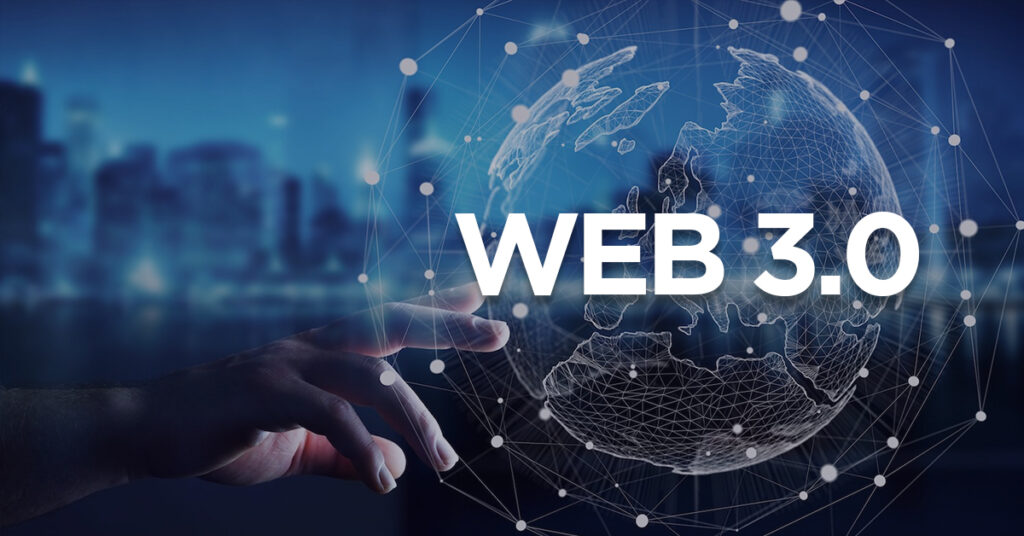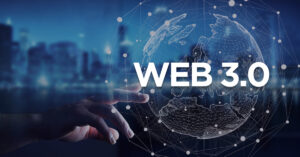
What is Web 3.0?
 Web 3.0 is highly decentralized, driven by machine learning and artificial intelligence, and leverages blockchain technology. The result is real-world human communication. Users retain control over their data and content, and they can sell or trade their data without losing ownership, risking privacy or relying on intermediaries. In this business model, users can log into a website without having their internet identity tracked.
Web 3.0 is highly decentralized, driven by machine learning and artificial intelligence, and leverages blockchain technology. The result is real-world human communication. Users retain control over their data and content, and they can sell or trade their data without losing ownership, risking privacy or relying on intermediaries. In this business model, users can log into a website without having their internet identity tracked.
Key to the innovation in Web 3.0 is the digitization of assets via tokenization. Tokenization converts assets and rights into a digital representation, or token, on a blockchain network. Cryptocurrency and fungible tokens are forms of digital currency that can easily be exchanged across networks, driving a new business model that democratizes finance and commerce. Non fungible tokens (NFTs) are units of data that represent unique assets such as avatars, digital art, or trading cards, that can be owned by users and monetized for their own gain.
It’s relatively easy to identify the major differences between Web 1.0 and Web 2.0. With the former, users passively consult web pages and, generally, do not generate their own content. With the latter, users generate content and interact with sites (and each other) through social media platforms, forums and more. With the Web 3.0 generation of the internet, the differences are not as clearly defined.
The term Web 3.0, coined by reporter John Markoff of The New York Times in 2006, refers to a new evolution of the Web which includes specific innovations and practices. Below are eight main features that can help us define Web 3.0:
- Semantic Web: The next evolution of the Web involves the Semantic Web. The Semantic Web improves the abilities of web technologies to generate, share and connect content through search and analysis by understanding the meaning of words rather than by keywords or numbers.
- Artificial Intelligence: By combining semantic capabilities with natural language processing, computers can understand information on a human-like level to provide faster and more relevant results. In doing so, they become more intelligent and better satisfy the needs of users.
- 3D Graphics: Three-dimensional design is used extensively in websites and services in Web 3.0. Museum guides, computer games, eCommerce, geospatial contexts and more are all common examples of this.
- Connectivity: With Web 3.0, information is more connected thanks to semantic metadata. As a result, the user experience evolves into a new level of connectivity that leverages all available information.
- Ubiquity: Internet content and services can be accessed anywhere at any time via any number of devices, rather than exclusively via computers and smartphones. Web 2.0 is already ubiquitous in many ways, but the growth of IoT devices will take it to new levels.
- Blockchain: With blockchain technology, user data is protected and encrypted. This prevents large companies from controlling and/or using users’ personal data for their gain.
- Decentralized: Decentralized data networks store data within a peer-to-peer interconnection. Users maintain ownership over their data and digital assets and are able to log in securely over the internet without being tracked.
- Edge Computing: Web 3.0 relies on the advance of edge computing in which apps and data are processed at the network edge on devices such as mobile phones, laptops, appliances, sensors and even smart cars.
How Web 3.0 Can Change Our Lives
These features bring us closer to a Web 3.0 definition. With the addition of semantics and machine learning, Web 3.0 is an evolution in which computers can understand the meaning behind information. They can learn what you are interested in, help find what you want faster and understand the relationship between things.
Now, let’s look at an example that brings these eight features together:
In Web 3.0, while driving, you can ask your automotive assistant a question: “I would like to watch a romantic movie and eat Japanese food.” The search engine embedded in the car assistant provides you with a personalized response that considers your location, suggesting the closest cinema that matches your request and a good Japanese restaurant by automatically consulting the reviews on social media. Then it might even present a 3D menu from the restaurant on the display.
Web 3.0 is no longer a dream but a reality (at least in many cases). In fact, it is cognitive technology like that of expert.ai that is making this all possible. Understanding language is integral to so many facets of the Web. By making semantics and natural language processing central components to it, the possibilities are endless.